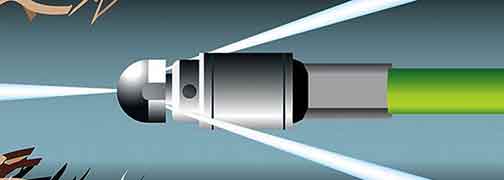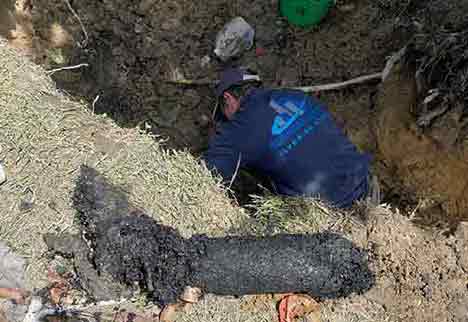Tree roots pose one of the greatest threats to your home’s sewer lines. Every time you bury a pipe in your yard, you run the risk of tree roots interfering with it. Underground sewer lines carry nutrient-rich wastewater, and tree roots love nothing more than a nearby source of nutrition.
Tree roots and sewer pipes are a “match made-in-heaven”. However, it can cause you major plumbing problems when the two meet.
Tree roots spread out in search of available nutrients. If they find a spot in your yard where nutrients are easily accessible, they will try to make the most of that food supply. Your sewer pipes can serve as that accessible source of nutrition.
It happens only if sewer pipes leak. That is because the water inside sewer pipes is not accessible to plant roots if there is no leak. But the tiniest crack in a pipe will be exploited by plants. Once the root works its way into the break, it is only a matter of time before it fills the entire pipe.
Tree roots intrusion into sewer lines is one of the most common causes of sewer line damage. Early signs that your sewer line has tree roots are slow draining water and gurgling sounds coming from the toilet every time you flush.
The chances of this problem happening in your home increase with the age of the house. Older homes with old pipes prone to corrosion are more exposed to this problem, explains Keyrenter Premier Property Management. Tree roots intrusion in sewer pipes is also more likely if there are trees within 20 meters of your sewer lines.
Is there a way to remove tree roots if they find their way into your sewer lines? What can you do to prevent the problem? There are two aspects to dealing with the issue of tree root intrusion into sewer lines. You must get rid of the roots and repair the damage to your pipes.
This post deals with tree root removal only.
How to remove tree roots from your sewer line pipes
Below are three DIY options for removing tree roots from a sewer line. These options only work for removing small tree roots. If you try them and the problem does not go away, you will have to go for the fourth solution; getting a professional to solve the issue.
Use rock salt
Rock salt is not coarse sea salt or table salt. It is that stuff you throw on icy sidewalks. Rock salt helps remove tree roots because it draws the water from them. If you deprive them of moisture, tree roots become dehydrated and die. Rock salt can be bought online or at a local store; you need 2 pounds of it.
To do this, follow these steps;
- Pour ½ a pound of rock salt into your toilet.
- Flush the toilet as many times as necessary to push the salt into the lines.
- Once the salt is gone, let it sit inside the pipes for at least 12 hours.
- During this time, do not flush your toilets. It will give the salt enough time to do its work.
Note that rock salt will kill tree roots, the tree, and surrounding vegetation. Rock salt can also corrode and weaken pipes.
Use copper sulfate
Copper sulfate, also known as bluestone, will kill the tree roots inside your sewer line pipes. You can buy this cheap herbicide/algaecide at your local hardware or garden supply store. You only need a half cup of copper sulfate.
To use it, follow these steps;
- Pour half a cup of copper sulfate into the toilet.
- Flush until all the crystals get into the lines.
- Open the windows in your home and leave the house for a few hours, taking your kids and pets with you.
- Flush the toilet when you return.
Warning: copper sulfate is toxic to pets; it can kill them on contact. It is banned in certain places; before you use it, check the local legislation.
Use foaming root killers
Foaming root killers kill tree roots and keep them from growing back. This powder foams when it comes in contact with water. Tree roots hate the active agent in the powder – dichlobenil – and will stay away if they detect the substance.
To use the powder, pour it into your toilet and flush. It will locate the tree roots and kill them. It also leaves a residue that prevents future tree root intrusion. You can repeat this every month to avoid future problems with tree roots.
Cut the tree roots
This solution requires you to call a local plumber, and it works for both small and large tree roots. The plumber will first do a camera inspection of your sewer lines to know the exact location of the tree roots. Afterward, they can get rid of the tree roots using any tree root removal method of their choice; hydro-jetting or sewer rodding.

High Pressure Water Streaming Known as Hydro-Jetting is the Best Way to Cut Through Tree Root Infiltration in your Sewer Line.
